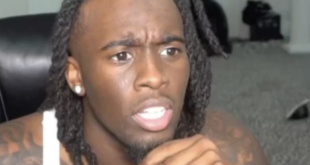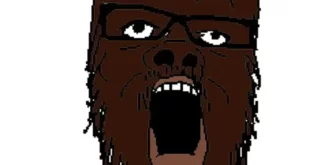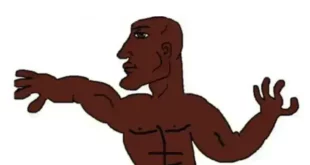Stuff Black People Don’t Like
October 21, 2014
Confession time.
The idea of black-on-black crime has never bothered me, nor has the tendency for the black community to practice “no snitching” and protect black criminals in their midsts.
What does bother me is the loss of real estate due to high rates of black-on-black crime, requiring white people to vacate the land where this internecine fighting takes place for either residential or business purposes.

What does bother me is the loss of ability to utilize public transportation, for the fear of being the victim of a crime, living/shopping near a bus or metro/train stop offers too great a risk and too little a reward for riding.
It’s sad individual black people lack the future time-orientation and impulse control to refrain from participating in the type of violence that destroys black lives and demolishes property value wherever a black community is found; but it’s a fact of life in America that no matter the money pumped into an initiative to offer jobs training, midnight basketball, or whatever other “My Brother’s Keeper” program promises to do, the violence remains.
Take this hilarious story out of metropolitan St. Louis, which lets slip one immutable truth of what the black undertow imports: the price per square foot in 67 percent black Ferguson (remember: Ferguson was 76 percent white in 1990) was already trending down before the Darren Wilson/Mike Brown encounter. [Riot or not, homes are selling in Ferguson, St. Louis Post-Dispatch, 10-19-14]
St. Louis has been called the ultimate Bell Curve City, and there’s no greater social metric of this fitting moniker than the monopoly blacks have on ensuring the city has a homicide problem.
Because of high rates of black homicide in the city, the Families Advocating Safe Streets was founded with only one goal in mind: a support group for friends and relatives of black homicide victims. [FAMILES TO HUNT KILLERS GROUPS SAYS POLICE, MEDIA PAY LITTLE HEED TO BLACKS, St. Louis Post-Dispatch, November 8, 1993]:
Four families of black murder victims have hired a private detective to find the killers of their loved ones, saying police and the media have not given them enough attention because of their race or social status.
Families Advocating Safe Streets, a support group for friends and relatives of black homicide victims, called a news conference Sunday at Northland shopping center to denounce what its members consider to be less concern and effort by homicide detectives and news organizations when it comes to black murder victims.
“There is some concern that there is not an equal sense of outrage with respect to black homicide victims,” said William Oliver, an assistant professor of criminology at the University of Missouri at St. Louis. Oliver cited the flurry of attention that the media and police gave a double homicide this year in Ladue and the disappearance of a white waitress who worked at Union Station.
“Those cases received a great deal of attention, as they ought to have received,” Oliver said. “On the other hand, there haven’t been any black cases resulting in such scrutiny.” He then introduced two mothers whose children were murdered.
One, Patricia Fedrick, said she did not even know if homicide detectives were still investiging the death of her son, Demetrius, 18.
He was shot in the head three months ago as he waited for a bus at Kingshighway and St. Louis Avenue. Homicide detectives could not be reached to comment Sunday.
Fedrick said she last heard from police two weeks ago. Police offered her moral support and said they would put their best detectives on the case, she said, “but as far as concrete, tax-paying actual facts, I haven’t received any.”
Demetrius Fedrick apparently was killed over a gold bracelet. “My son worked two jobs, graduated high school and started trying to become a man, but he was robbed of that also,” his mother said.
Supply and demand, in action: the supremely high rate of homicide in the black community of St. Louis leaves police jaded to trying to solve a seemingly insolvable problem versus the extreme rarity of white homicide in the city leading to immediate calls to solve the horrible crime (if black homicides were actually considered “horrible” by the black community, then they work overtime to end the so-called ‘senseless’ killings).
When taxpayer funded police departments have overwhelmed (and overburdened) with trying to investigate homicides of blacks and navigating the murky waters of a black community protecting suspects because they don’t trust the police, you’ll have the problems the Families Advocating Safe Streets runs into every single day of the year.
And every year the organization holds a vigil to read the names of those murdered during the prior in St. Louis, with the true casualty being the actual city of St. Louis. [VIGIL HONORS SLAIN, COMFORTS THOSE WHO MOURN, St. Louis Post-Dispatch, January 1, 2002]:
The Rev. Earl Nance, president of the St. Louis Clergy Coalition, said blacks must take more responsibility to help police fight “black-on-black crime.”
“I understand people who holler about the police,” Nance said. “There are bad police officers, just like there are bad preachers and bad politicians. But I’d like to see more of these characters out there (protesting) on the streets when we kill each other.”
No matter the promises made year after year, the same theme runs through each vigil. The same common dominator.[‘Let’s try to get it straight’: Speakers at annual vigil implore community to work harder to curb violence that claims lives, ST. LOUIS POST-DISPATCH, January 1, 2008]:
Veteran activist Anthony Shahid said, “What’s happening in our community is that we are losing our black youth like it’s going out of style.”
No, the real cause for concern is how many sections of the city of St. Louis become uninhabitable to a family in search of a peaceful community to raise their children or a business looking to relocate in search of higher profits. [Homicides are down, but the pain lives on: FAMILIES GATHER AT ANNUAL CANDLELIGHT VIGIL., St. Louis Post-Dispatch, 1-1-2012]
“In an ideal world, this vigil would not be necessary, but here we are,” Mayor Francis Slay told a crowd of about 100 mourners, officials and preachers gathered Saturday at Williams Temple Church of God in Christ in the 1500 block of Union Boulevard.
Slay called on residents and family members to teach young people “the value of life.”
Most of the homicide victims were young African-American men killed during shootings.
James Clark of Better Family Life, a nonprofit job training and social services provider, told the group that black-on-black violence has become “too serious for words” and that action is needed.
“We cannot talk or rally our way out of this one,” he said. “Last time around it was us versus them. This time it’s us versus us. … It’s time to put down the pistols.”
So it never gets better and though the Families Advocating Safe Streets offers a great photo-op for white politicians and public servants to cozy up to the black community, the violence continues to drive away any of the civilization that only the former racial group and create/sustain/proliferate in St. Louis.
Conversely, the violence of the black community is only a problem as long as its primary source, the black population, goes unaddressed. [Mourners and community leaders gather for annual candlelight service for victims of homicides, St. Louis Post-Dispatch, 12-31-13]:
St. Louis Mayor Francis Slay began his remarks by recalling city’s 119th victim this year, Clara Jean Walker, who was inside her home Sunday when she was killed by a stray bullet that rocketed through a window.
“It’s a tragedy that never should have happened,” Slay said. “All of us should pledge to do everything we can to reduce the senseless shooting and violence. That includes telling police anything and everything we know about the person or people who were on Ms. Walker’s street” or in any crime.
“St. Louis is awash with guns,” the mayor said. “This has got to stop.” Of the 120 murdered in the city in 2013, 98 were men. At least 105 were African-American.
Guns don’t kill people, Mayor Slay.
A gun is an inanimate object, similarly to how a formerly robust community that goes from majority white to majority black is no longer animated with commercial life or blessed with rising property values.
Which brings us to a story that defines the Bell Curve City. [Brother and sister die in shootings blocks away from each other, Fox2Now, 10-19-14]:
A Berkeley family is reeling from two separate murders. St. Louis Metropolitan Police say 35-year-old Margaree Dixson was shot and killed Saturday night. Her brother, 29-year-old Jermaine Jones, died at an area hospital a few hours later. He was also the victim of gunshots.
Dixson’s body was found near the intersection of Lillian and Plover. Officers were called for a shooting at approximately 11:40p.m. Saturday. Police say she was shot in the head, chest, arms and hand. Witnesses heard several gunshots.
Approximately 2 ½ hours later, police responded to a shooting near Saloma and Wren. Jones was shot multiple times and taken to an area hospital where he died Sunday morning. According to police, Jones’ acquaintances were standing with him when shots started coming from an unknown male. Police recovered two firearms from the victims’ vehicle.
Family members did not want to speculate on a motive for the shootings but they are pleading for help and calling for an end to violence.
“There’s too much violence going on,” said Nicole Rice, sister of Dixson and Jones. “I can’t sleep. I can’t think. It can’t work. I can’t do anything wondering if my son will be a victim to the streets.”
“When you lost two kids at one time it’s tough,” said Ann Carlson, family friend. “I mean the same night, back to back, it’s painful.
She said family members are now left to care for the victims’ children without any money.
“They don’t have any insurance,” said Carlson. “If anybody could help them or help us out, it will help.”
The idea of black-on-black crime has never bothered me, nor has the tendency for the black community to practice “no snitching”and protect black criminals in their midsts.
What does bother me is the loss of real estate due to high rates of black-on-black crime, requiring white people to vacate the land where this internecine fighting takes place for either residential or business purposes.
No white community in America has ever founded anything resembling the Families Advocating Safe Streets group in St. Louis as blacks have done, a reminder of the tragic consequences of ignoring the contents of The Bell Curve; for as life in St. Louis proves, the bell curve will not ignore you.
 Daily Stormer The Most Censored Publication in History
Daily Stormer The Most Censored Publication in History


